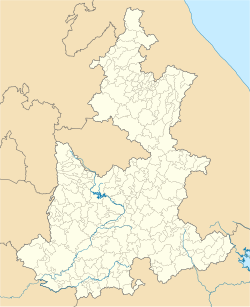Santa Isabel Cholula | |
|---|---|
Municipality and town | |
| Coordinates: 19°00′N98°22′W / 19.000°N 98.367°W | |
| Country | |
| State | Puebla |
| Population (2020) (municipality) | |
• Total | 11,498 |
| Time zone | UTC-6 (Zona Centro) |
| Website | https://santaisabelcholula.gob.mx/ |
Santa Isabel Cholula is a town and municipality in the Mexican state of Puebla. [1] In 2020, the municipality reported a population of 11,498, an increase of 43% from 2010. [2]


